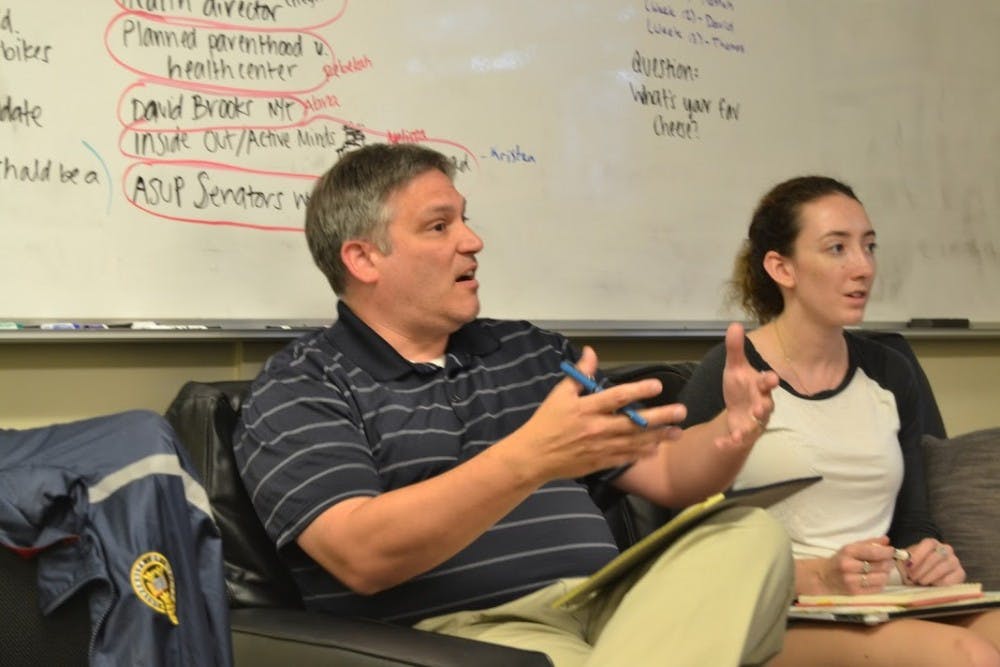by Melissa Aguilar |
The Beacon is going to go where few student news media have gone before — all content will be available exclusively online and the print edition will be eliminated starting in the 2016-2017 academic year.
Jeromy Koffler, director of student activities, made the decision in an effort to continue to meet readers where they’re at — online and on mobile. He sees the change as an evolution of what The Beacon, as a media organization, has already been doing over the past few years.
“What I see though, with this newspaper, is that our community is already engaged more electronically,” Koffler said. “And I see a lot of positive kind of hope towards a creative new way in which we can envision The Beacon in the future.”
Last fall, The Beacon launched a mobile app, and the newly redesigned website racked up more than 215,000 pageviews between Oct.1 2014 and Oct. 3 of this year, according to Google Analytics. In contrast, The Beacon distributes 1,750 printed copies on campus and to home-delivery subscribers each week.This semester, the weekly print edition reduced its page count from 16 to 12 to further focus on digital coverage.
There were also financial considerations. The Beacon spends approximately $22,000 annually on printing costs for the weekly issue. Under the all-digital plan, some of those funds will be reallocated for digital equipment and professional development for the students. The cost savings mean The Beacon will no longer have to rely on advertising revenue to break even.
Many larger schools, such as the University of Oregon, have reduced their print editions from daily to once or twice a week to focus more on digital content. Most universities of UP’s size continue to produce a weekly print newspaper.
“We’re kind of trailblazing this situation,” Editor-in-Chief Katie Dunn said. “So we want to set a good example for other student media that will want to work off of what we do.”
Even though the change is not set to happen for roughly another year, Dunn wanted time to work through questions as they arise during the transition.
Dunn being a senior, The Beacon will hire a new editor-in-chief in mid-to-late January so that the new hire can work more closely with Dunn and the staff on the transition. Applications for other staff positions will also be available around that time. Some staff positions will be eliminated while others will be added to meet The Beacon’s changing needs.
To produce the print edition, the editorial board spends roughly 40 hours a week working on layout and design. By being exclusively online, Beacon staff will have more time to focus on content creation.
Nancy Copic, assistant director of student media and adviser to The Beacon, said that though many former Beacon staff members have happy memories of working late nights on production of the paper, this new shift will be a positive experience for incoming students.
"From an adviser’s point of view, this is an exciting change,” Copic said. “It will give the students who work at The Beacon more time and resources to focus on the kinds of digital skills and the mindset that will help launch them into careers after they graduate, whether it’s in journalism or marketing or technology or law or fields that don’t even exist yet.”
One thing that’s not changing is the importance of content.
“Regardless of the platform – print or digital – striving to produce meaningful, engaging content, and telling stories important to UP students has been and will continue to be the foundation of The Beacon,” Copic said. Melissa Aguilar is the copy editor for The Beacon. She can be reached at aguilarm16@up.edu.








